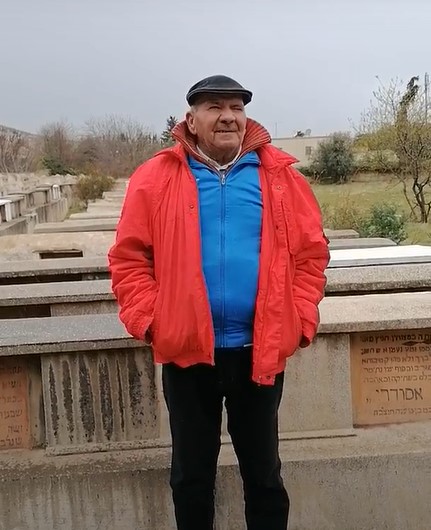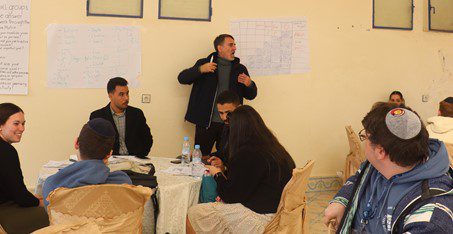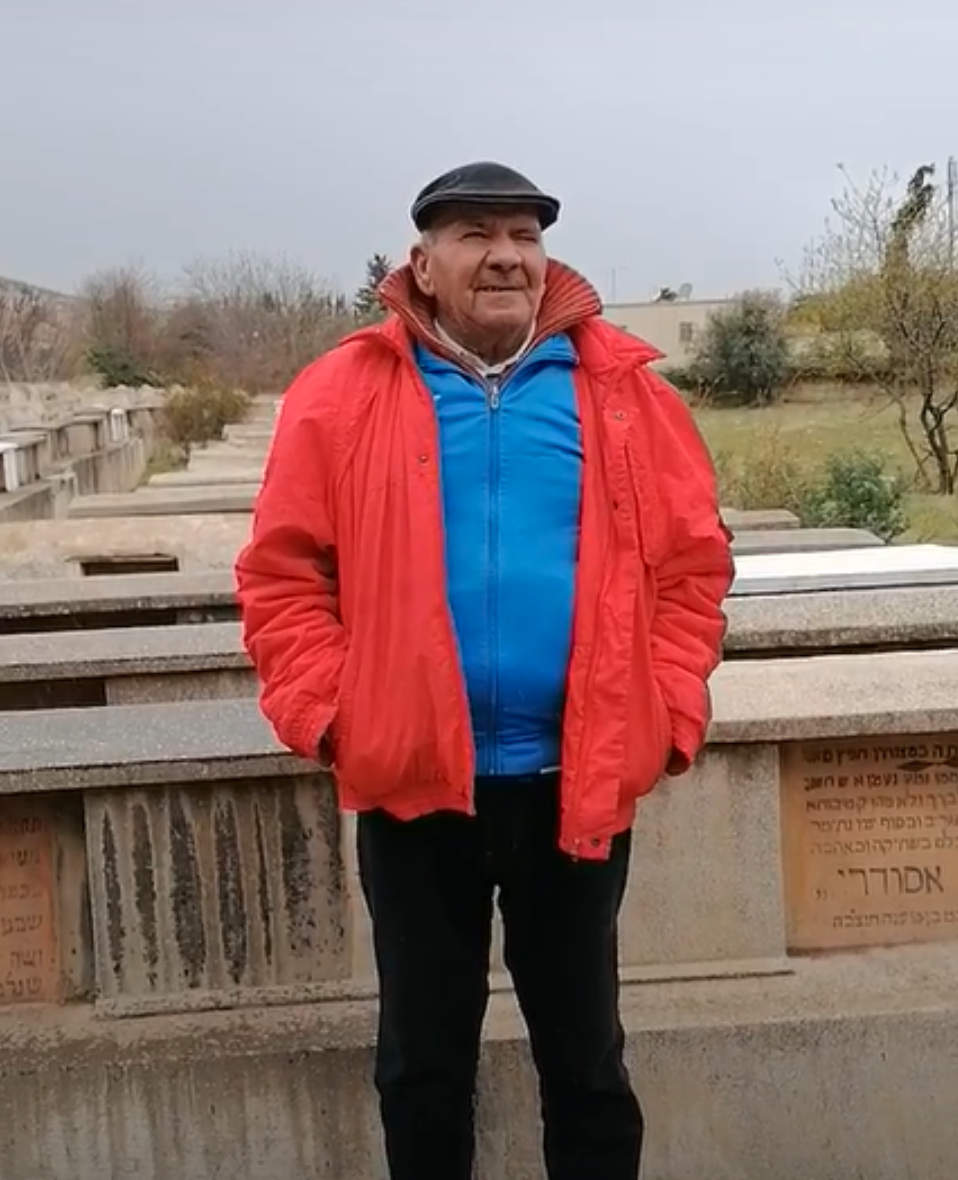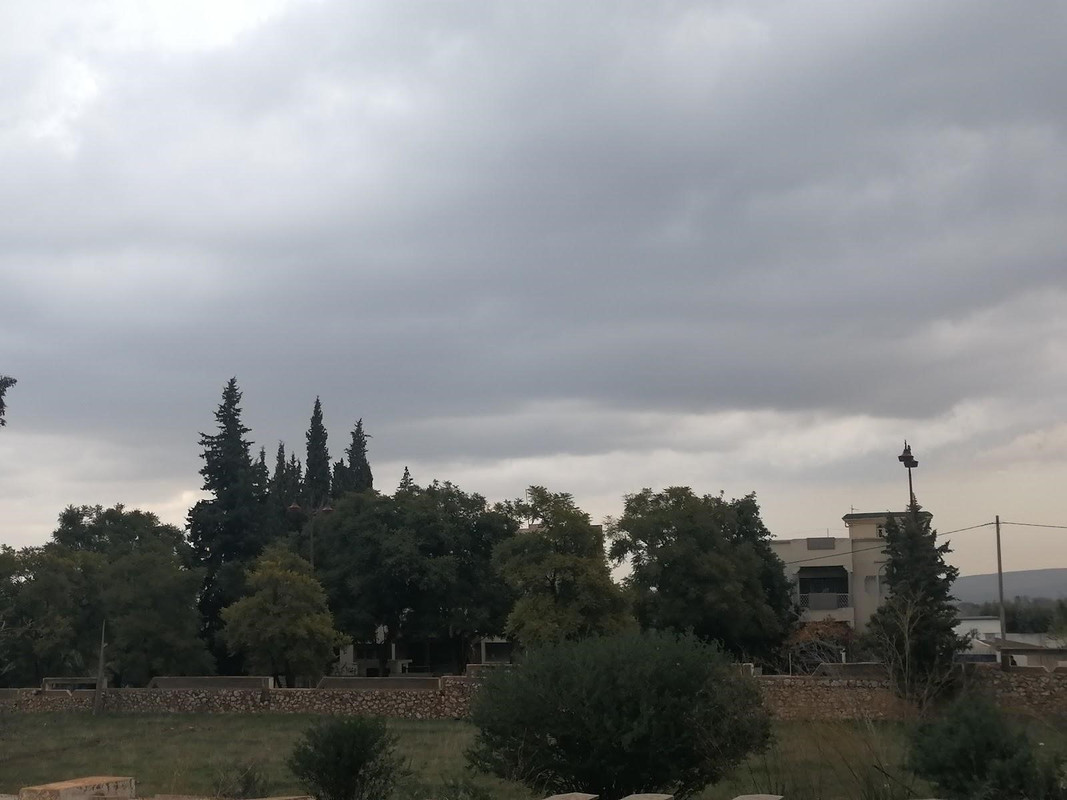Arabic Version
World Interfaith Harmony Week
An Interview with Hmed: The Caretaker of the Jewish Cemetery in Sefrou Sefrou, Morocco
By Amal Mansouri

Hmed, 75 years old, is the caretaker of the Jewish Cemetery in Sefrou. Photo: Amal Mansouri/HAF
Located in the foothills of the Middle Atlas Mountains, 27 kilometers south of Fes, the city of Sefrou brims with diversity and hundreds of years of religious solidarity. To gain more insight into the city’s pluralistic past, I set out on a journey to meet the caretaker of the Jewish cemetery, one of the most prominent remnants of the Jewish presence in the Fes region.
Visiting the Jewish Cemetery of Sefrou
Finding the cemetery was not difficult as it is a well-indicated, known site in the city. Upon my arrival, I met Hmed, a 75-year-old man who is the caretaker of the cemetery. He has been guarding it for 35 years. He was able to secure this job thanks to his Jewish friend, Mimoun, whose family owned a gas station where they worked together before the departure of the Jewish community. According to Hmed’s testimony, the cemetery is at least 500 years old, potentially more. It covers almost four hectares, and it is frequently visited by Jewish people whose families and ancestors are buried there.
I was not surprised to hear that the number of visitors was significant and could surpass 1,000 annually. As I learned from my research and through my interactions with the local community, many Jewish people have an unwavering attachment to Sefrou, coming to Morocco just to visit the “little Jerusalem,” as it is known. The Jewish community was intentional in giving this nickname to Sefrou, which explicitly indicates its significant cultural value and offers clues about its rich history. The number of Jewish people who visit is particularly significant during the Hiloula[1]. “They brought food and shared it with us. It’s a special occasion for them. But I think that the celebration of this moussem[2] is even more dynamic in Ouezzane.”
—
[1] A religious meeting that gathers the Moroccan Jewish community to mark the anniversary of the death of a rabbi.
[2] Annual religious gatherings held in honor of saints in various regions of Morocco.

The entrance of the Jewish cemetery, Sefrou, Morocco. Photo: Amal Mansouri/HAF
Memories of Living in Pluralistic Sefrou
During my conversation with Hmed, I was impressed to hear that he had learned Hebrew while working in the cemetery. As the information about the deceased, including their names and dates of birth and death, are written in Hebrew, he had to learn the language in order to do his job properly, especially in cases when he’s asked to show a visitor a specific gravesite.
I was also interested in hearing Hmed’s story, as he used to work and live alongside the Jewish community. When asked about this aspect of his life experience, Hmed replied proudly: “I used to have a lot of Jewish friends from Bni Aich. They were my neighbors and co-workers. I used to sell walnuts and pomegranates to them.” He added: “I remember vividly when my Jewish neighbors used to bake Rqaqa and share it with my family. It’s a sweet biscuit made of cinnamon and sesame.” Hmed’s eyes widened while talking about the dishes as if he was trying to remember the taste in order to tell me more about the ingredients they used. Hmed resumed: “In addition to Rqaqa, my Jewish neighbors used to make a dish called Skhina. It was very delicious and resembled the famous Marrakechi dish, Tangia. I can’t remember the specific ingredients, but it definitely included potatoes, meat, and corn.” Hmed enthusiastically discussed the flourishing conditions that characterized the era when the Jewish community lived in Sefrou.
He added: “Retrospectively, the [Jewish people] in Sefrou would bargain with tea and sugar. They would sell them at low prices, but only with these two products. They sold other products at higher prices to compensate.” With a big smile and a curious look on his face, as if he were realizing something for the first time, he continued: “Their marketing knowledge and techniques were brilliant.” He then recalled the times when he used to deliver bread to the synagogue, telling me about the Alliance school where Jewish people would normally study French, and the Ellie Chiba school where they studied to become Rabbis.
Maintaining the Jewish Cemetery
To maintain the cemetery, once each year, the committee in Fes provides Hmed with the necessary resources based on the calculations on the number of workers needed, the number of days they would be working in the cemetery, and the amount of money required to cover the activities. Additionally, there are a few Jewish individuals who contribute financially to maintain the cemetery. For example, Hmed mentioned a Moroccan Jewish man whose parents and sister are buried in the cemetery. Though he now lives in Switzerland, he gives an annual donation to help with maintenance costs.
From Hmed’s point of view, having activities like planting trees and flowers would enhance the aesthetics of the cemetery. He also raised an important point in regards to providing the cemetery with electricity, mentioning that it would allow for the extension of visiting hours. I also learned from him that the diaspora community is raising funds to optimize the empty spaces within the cemetery walls by building rooms where they can practice their rituals, especially during the Hiloula.
The empty spaces in the Jewish cemetery, Sefrou, December 2021. Photos: Amal Mansouri/ HAF
A repository of stories
When asked about the stories or memories he could recall about those buried in the cemetery, Hmed answered: “The Jewish people who are buried here come from the Andalous. They worked in different fields; they were merchants, artisans, plumbers, and butchers, among other professions. Several rabbis are buried here, such as Yaacoub Chamoune Hammou, who lived in Rhiba in the Mellah. He was a butcher.”
I inquired further about this rabbi, as I had heard his name previously while speaking with the community in the Mellah. Here, I was told that his family was very welcoming and would invite people who lived outside Sefrou to spend the night at their house during the days that preceded and followed the weekly market, the souk day. Through these discussions, it somehow felt like we were piecing together the stories of the Jewish community that lived in Sefrou. Hmed resumed: “Rhiba is the place where all the butchers worked. [The rabbi’s] wife’s name was Chamha.”

Grave of Rabbi Rafael Moche El Baz, Jewish cemetery, Sefrou,Morocco. Photo: Amal Mansouri/ HAF
Through my conversation with Hmed the caretaker, the cemetery came to resemble a repository of narratives or a book of stories, the last of which was written in 1980 when Yaacoub was buried. Coincidentally, the cemetery was also last visited by one of Yaacoub’s family members.
Though stories of Rabbi Yacoub and other individuals buried in Sefrou’s Jewish cemetery have come to an end, they continue to live on, especially with the deployed efforts of cultural heritage programs like Dakira that have a keen interest in reviving and preserving the legacy left by the diversity of people who have been a part of the Moroccan social fabric.
—
This article is part of a series of interviews that celebrates Interfaith Harmony Week (February 1-7, 2023) and have been facilitated by the USAID Dakira program, which is implemented by the High Atlas Foundation and its partners and aims to strengthen inter-religious and inter-ethnic solidarity through community efforts that preserve cultural heritage in Morocco.
The article was completed with the support of the United States Agency for International Development (USAID), and the High Atlas Foundation is solely responsible for its content, which does not necessarily reflect the views of USAID or the Government of the United States.
Read more from the same series:
English:









